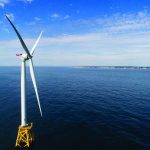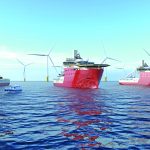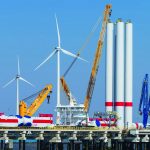We are at a unique time in the relatively young industry of wind power generation. There have been several boom and bust cycles in the U.S. due primarily to the lack of a stable tax credit policy. This makes the industry reactionary in planning and doesn’t leave much room for long-term structuring. One aspect of this that takes a direct impact from those reactionary cycles is the training and development of wind turbine workers. It is important to train and develop the human assets of a company in order to keep them safe and efficient. Unlike more established industries, the wind industry does not have a standard consensus on what it means to qualify a wind turbine worker.
Let’s examine the workers in the wind industry that have the most daily contact with the turbines, including any technician who operates, maintains, troubleshoots, and repairs wind turbine technology. These technicians should be able to work safely around the turbine components as well as understand the hazards contained within each specific model of wind turbine they service and how to properly mitigate the risk of these hazards. The operations workers could be technicians from the OEM, an ISP, or an owner-operator.
According to OSHA article 1910.332(a), there are two types of workers around electrical equipment — competent and qualified.
OSHA defines each of these worker levels as someone who can competently work around industrial equipment and recognize hazards within the general work conditions. For a wind technician, this may include mechanical work or non-electrical maintenance on the turbine. A competent person cannot work within the electrical cabinets without further qualification through training and demonstration of understanding to a qualified person.
The training that qualifies a worker “shall, at a minimum, be trained in and familiar with the following: the skills and techniques necessary to distinguish exposed live parts from other parts of electric equipment; the skills and techniques necessary to determine the nominal voltage of exposed live parts, and the clearance distances…; and the corresponding voltages to which the qualified person will be exposed,” according to OSHA.
In this context, OSHA is specifically talking about work in and around the electrical cabinets, which could include isolating, troubleshooting, or replacing electrical parts (< 700 volt, three-phase power). The qualified workers would have to be trained on the specific equipment’s operation, hazards, and electrical schematics.
According to Charles Clayton, the training manager for Suzlon, “Every turbine manufacturer has different turbine models and versions. [The worker] has to know the functional parameters and the unique hazards of the machine.”
In the U.S., these standards from OSHA cover work around electrical equipment, but there are also similar guidelines for qualifying electrical workers within the NFPA70E standards that focus specifically on electrical arc flash safety. In Canada, there are electrical safety standards, such as Z462, but most regulations showing “competency” are provincial. For example, the Ontario OH&S law defines a “competent person” (or “qualified worker” in the U.S.) as someone who “is qualified because of knowledge, training, and experience to organize the work and its performance, is familiar with this act and the regulations that apply to the work, and has knowledge of any potential or actual danger to health or safety in the workplace. The training mentioned in the provincial law must be equipment (turbine and model) specific so the worker is able to have ‘knowledge of any potential or actual danger in the workplace.’”
As Mike Doherty, the director of learning and continuous improvement for Shermco Canada, said, “Just because you are an electrician doesn’t mean you are qualified to do certain jobs, unless you have the knowledge, training, and experience to do that work.”
The structure of qualifying an electrical worker varies from company to company, but they can be costly for those that don’t have the rigor of a training management program in place.
The wind industry is growing at such a fast pace that it doesn’t always afford strategic forethought and planning. It has been a reactionary industry that doesn’t change unless there is a problem. When sending workers to maintain and fix these highly automated power generators, are we truly preparing them to work safely? A rigorous qualification standard is not only a good idea; it’s the law. If the management of a company cannot show due diligence in qualifying their workers through training, they may be liable for any injuries or damage that occur on-site by their unqualified workers.





































